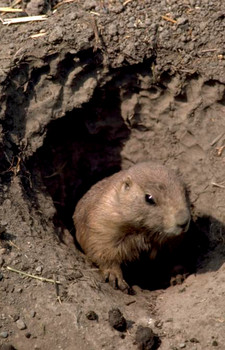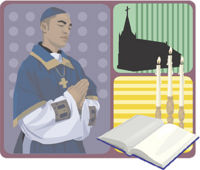History of Groundhog Day
From Giftypedia
[edit] About Groundhog Day
Most of us grew up hearing about the all-knowing weather forecasting of the portly, coarse-haired groundhog. Perhaps you saw the world's most famous burrowing prophet, Punxsutawney Phil, featured in Bill Murray's 1993 movie “Groundhog Day.”
Legend has it that when the groundhog crawls from his winter digs and sees his shadow, it's a sign that bad weather will stick around for six more weeks and he returns to his hole. If he emerges and doesn't see his shadow, it means winter will soon end and spring is on its way! People all over the world celebrate with parties, gifts and other festivities.
[edit] Origin of Groundhog Day
But have you ever wondered about the origins of this peculiar holiday?
According to the official website of good ol' Punxsutawney Phil, Groundhog Day has its origins in an early Christian holiday known in Europe as Candlemas. For generations, it was a sacred tradition for religious leaders to consecrate candles on February 2nd before distributing them to the parishioners. The weather that day was watched very closely, as it was believed that if Candlemas was a sunny, cloudless day, winter was not yet over and there was more inclement weather to come. If it happened to be cloudy and raining on that day, however, the people rejoiced at the prospect of an early spring.
When the Roman legions defeated the northern country of Germany, it is believed they brought this cultural tradition to the Germans of weather prediction, whose subsequent observation of Candlemas more closely resembled the Groundhog Day practices Americans are most familiar with. They believed that if the sun showed itself on Candlemas, a hedgehog would see its shadow and thus predict six more weeks of foul weather.
The Germans had a saying which captures the essence of the Candlemas practice of weather prediction:
- For as the sun shines on Candlemas day,
- So far will the snow swirl until the May.
German immigrants in Pennsylvania happily discovered that in the absence of their beloved hedgehog, a similar bewhiskered animal flourished in large numbers in the region. Thus the groundhog became the official soothsayer of the offbeat holiday we now know as Groundhog Day.
[edit] An American Institution
The earliest American reference to Groundhog Day can be found from James Morris' diary, a storekeepeer from Morgantown, Pennsylvania, dated February 4, 1841:
- "Last Tuesday, the 2nd, was Candlemas day, the day on which, according to the Germans, the Groundhog peeps out of his winter quarters and if he sees his shadow he pops back for another six weeks nap, but if the day be cloudy he remains out, as the weather is to be moderate.”
Since 1966, the annual groundhog ceremony has become a national media event. Originally held in secret, it has become an American institution. Every February 2, people gather outside of Punxsutawney, Pennsylvania. Phil, the groundhog, comes out of his burrow (heated electrically, of course) and looks for his shadow. Phil utters his prediction to a Groundhog Club representative who in turn announces the prediction to the public. It is reported that Phil sees his shadow approximately 90% of the time and residents claim that the groundhog has never been wrong.







 Printer Friendly
Printer Friendly
